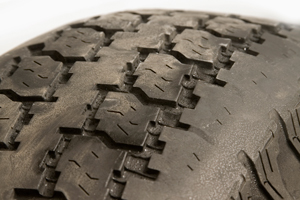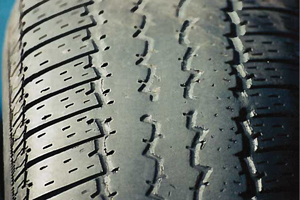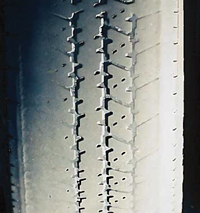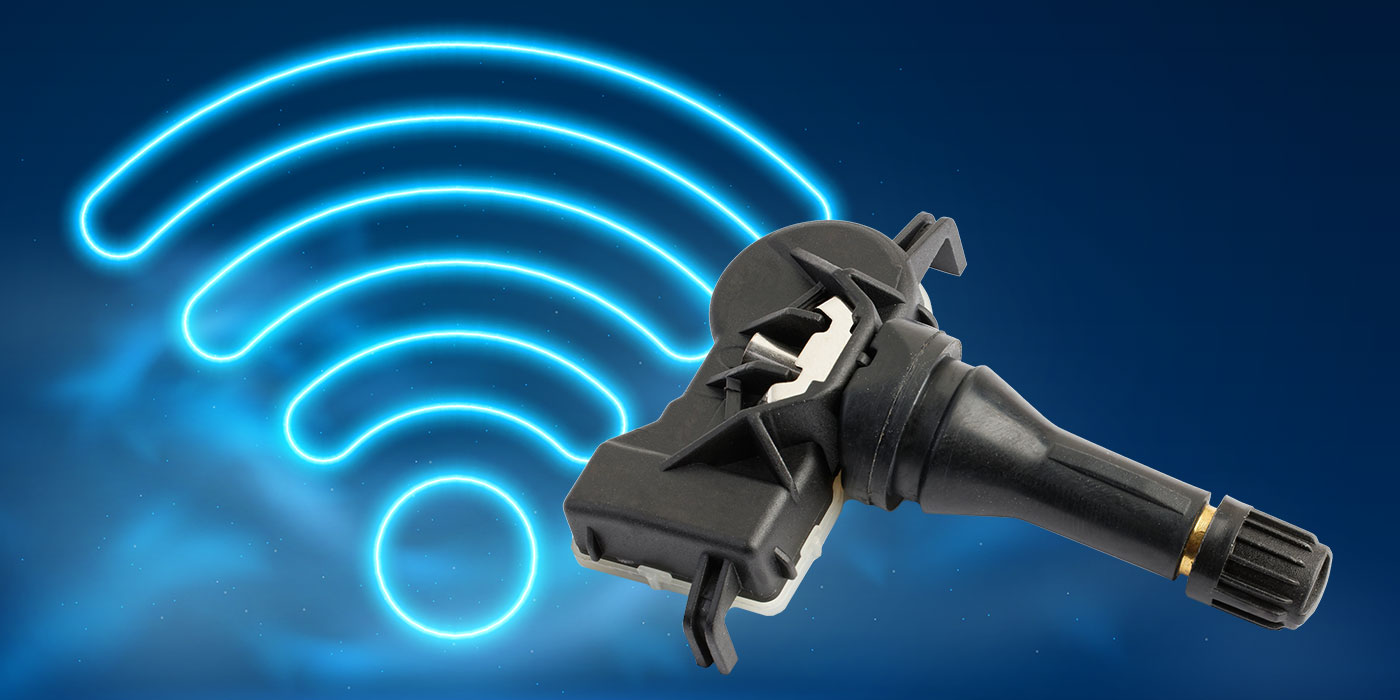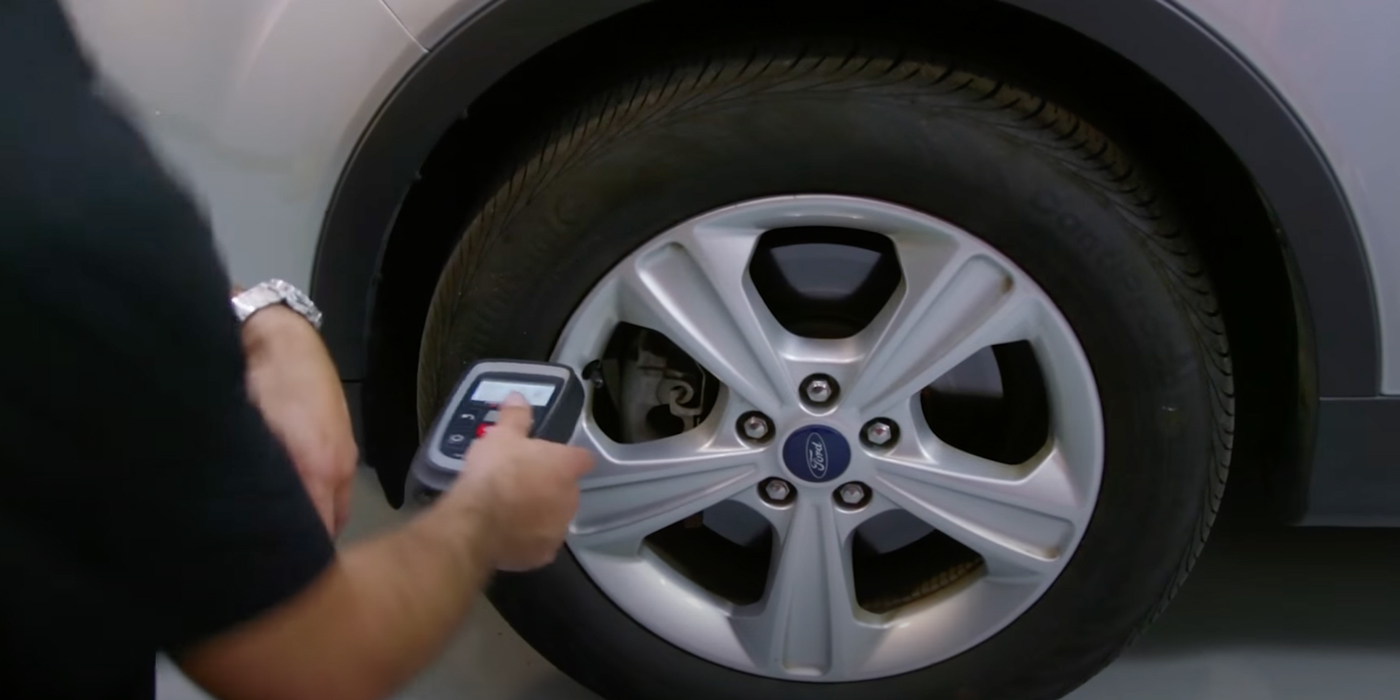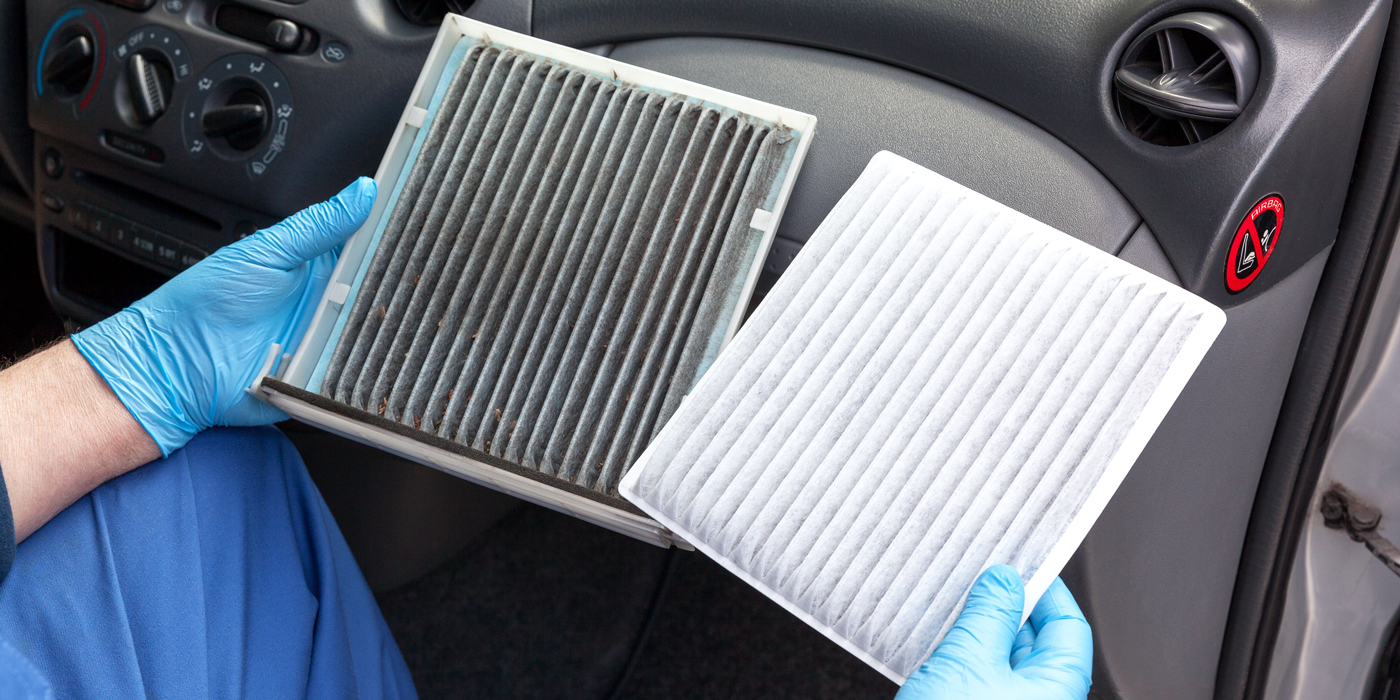A tire can tell you a lot about a suspension. Most specifically, it can tell you if the angles, inflation and components are within specification. Here are the most common wear patterns and what causes them.
Tire wear in the center of the tread pattern tells you that the inflation patterns are too high. Too much pressure can cause the contact patch to shrink and the center of the tire to carry all of the load.
Tire wear on the edges of a tire will typically indicate inflation pressures are lower than specified. When a tire is underinflated, the contact patch grows and the load is carried by the outside edges of the patch.
Feathering
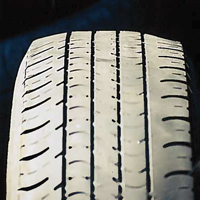 The indicator of excessive positive or negative toe angle is a feathering or scuffing that can be detected by stroking your fingertips across the edge of each tread bar or tread block. A feather edge on the inside of the tread bar indicates excess toe-in, while a feather edge on the outside of the tread bar indicates toe-out. Because toe angle is affected by changes in camber and caster angles, it’s always the last angle to be adjusted during the wheel alignment process. In addition, any change in camber or caster angles will immediately change the toe angle. Toe angle geometry can also be greatly affected by changes in suspension height.
The indicator of excessive positive or negative toe angle is a feathering or scuffing that can be detected by stroking your fingertips across the edge of each tread bar or tread block. A feather edge on the inside of the tread bar indicates excess toe-in, while a feather edge on the outside of the tread bar indicates toe-out. Because toe angle is affected by changes in camber and caster angles, it’s always the last angle to be adjusted during the wheel alignment process. In addition, any change in camber or caster angles will immediately change the toe angle. Toe angle geometry can also be greatly affected by changes in suspension height.
Scalloped
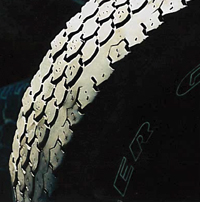 Cupped or scalloped dips appearing around the surface of the tread could indicate loose, worn or bent suspension parts. Worn shock absorbers or unbalanced tires can also cause cupping, but the cupping would typically be more indicative of a concentric pattern. Shocks and struts are the most likely culprit because they provide damping force to control tire movement. When the tires move excessively, the scalloped pattern can appear. A lack of rotation can cause this condition.
Cupped or scalloped dips appearing around the surface of the tread could indicate loose, worn or bent suspension parts. Worn shock absorbers or unbalanced tires can also cause cupping, but the cupping would typically be more indicative of a concentric pattern. Shocks and struts are the most likely culprit because they provide damping force to control tire movement. When the tires move excessively, the scalloped pattern can appear. A lack of rotation can cause this condition.
Outer Edge Wear
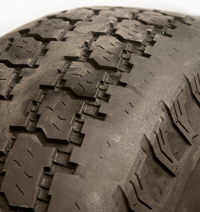 Wear on the outer edge of a tire is rare these days, but it does happen. Positive camber, caster and toe can lead to wear on the outer edge. If you see edge wear on one side, check the thrust and setback.
Wear on the outer edge of a tire is rare these days, but it does happen. Positive camber, caster and toe can lead to wear on the outer edge. If you see edge wear on one side, check the thrust and setback.
But, it should be noted, the leading cause of outer edge wear on modern vehicles is over-enthusiastic cornering.
Inner Edge Wear
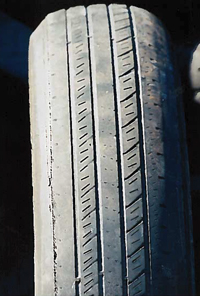 Inner edge wear on tires is the most common problem most technicians see. The angles causing this type of wear are typically negative toe and camber. For parts, there are three component sources of the inner edge wear: bushings, springs and loads.
Inner edge wear on tires is the most common problem most technicians see. The angles causing this type of wear are typically negative toe and camber. For parts, there are three component sources of the inner edge wear: bushings, springs and loads.
- Bushings
Ozone, extreme temperatures and other atmospheric issues tend to destroy rubber bushings and cause the alignment angles to change. Some vehicles have hydraulic bushings on the rear lower control arms. Some bushings will leak when they fail. When a bushing in the rear fails, the extra movement causes the wheels to toe out and the camber to go negative.
- Springs
As a suspension compresses and rebounds, the alignment angles change. Engineers tune alignment angles for a specific ride height to maximize handling and tire wear. If a spring can no longer support the vehicle, the alignment angles will suffer. Most engineers tune the suspension to toe out when the rear suspension compresses. This increases vehicle stability. But, it also causes the inner edge of the tire to wear. Springs are made of metal that is heat-treated, but can still fatigue. This includes leaf, coil and torsion bar springs. If you see a vehicle that needs considerable adjustments for camber on both wheels of the same axle, inspect the springs.
- Loads
Loads in the rear of the vehicle will cause changes to toe, caster and camber in the front (and possibly the rear). The camber and caster will become positive in the front, and if the vehicle has an independent rear suspension, the camber will become negative and it will be toed out. This could lead to outside edge wear in the front and inside edge wear in the rear.

